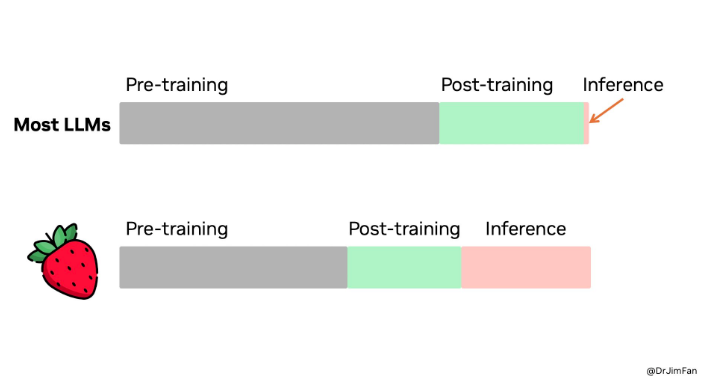
**Top bar: Most LLMs
1. Pre-training (gray)
- What happens: GPT-o1 is trained on massive datasets like Common Crawl, books, code, etc., using next-token prediction (autoregressive modeling).
- Goal: Learn general world knowledge, language patterns, reasoning abilities, etc.
- Duration: Longest phase (uses the most compute and data).
- Typical data: Unlabeled web-scale data, often filtered and tokenized.
2. Post-training (light green)
- What happens: This is often called instruction tuning or alignment training.
- Fine-tune the pretrained model to follow instructions, using human-written prompts and completions.
- May include RLHF (Reinforcement Learning from Human Feedback).
- Goal: Make GPT-o1 more helpful, safe, and aligned with human intent.
3. Inference (tiny pink end)
- What happens: You prompt the model with a query (like this conversation), and it generates a response using its frozen, trained weights.
- No learning happens here — it’s just forward pass.
Now with GPT-O1:
🍓 Inference-time adaptation with GPT-o1 includes:
- Memory (like with OpenAI’s new memory feature for GPTs)
- RAG systems that pull in external knowledge dynamically
- API fine-tuning endpoints that let you keep evolving the model
- Agents that can self-reflect or modify prompts/tools over time
- Possibly in-context learning loops or caching tricks to emulate “learning”
🚫 What GPT-o1 is not doing:
- No gradient updates
- No weight changes
- No permanent new skills learned unless OpenAI retrains or fine-tunes it centrally
GPT-o1 does not truly learn during inference, but through memory, retrieval, and context, it can simulate learning-like behavior. The model itself remains fixed — but it feels smart because of how it’s scaffolded.
